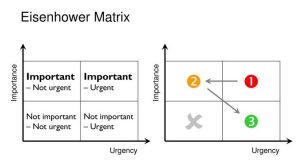It’s no secret that our company had high turnover in 2014. Why? Because our goal was to have a team that believed in a good culture, that held themselves accountable, and were customer evangelists. While we hired a full stack team in the early stages of our startup, we realized that most of the staff didn’t share the same vision. When that hit like a beacon in the night, we knew it was time for a complete overhaul.

Hire like-minded people that love being part of the big picture and the crazy start-up ride.
With most tech startups, entrepreneurs tend to move quickly to create the “team” that will ultimately create the MVP (Minimal Viable Product) to hit the market. This means you have to hire like-minded people that love being part of the big picture and the crazy start-up ride. They should be adventuresome team players that are incredibly excited about solving a serious problem in the marketplace.
If you are in a predicament where things are just not working out the way you had envisioned, always check the pulse of your company, and use these points as reference to measure the caliber of your team and to ensure you are meeting the goals of the company.
WEED OUT POOR PERFORMERS
Turnover is viewed to be costly and detrimental to the health of a company. However, in our experience, turnover caused by weeding out poor performers’ actually increased moral with our top performing staff and propelled the growth of the company. We consistently assess our employees and classify them in the following manner:
- “A” players—potential stars-in-the-making who will lead the company in the next generation. These are people that will ultimately be promoted, own stock and have major skin in the game.
- “B” players – the “steady eddies” who perform their jobs, do what is expected of them, and not much else. These are the “fillers”, they get the job done in a utilitarian way, put in their time and just meet status quo.
- Bottom feeders – those that contribute the least to the organization. They can be toxic, gossips, lazy, and drag the rest of the team down.
Classifying employees in this manner can help you make the necessary decisions on who to keep, and who to cut, because the success of a company is dependent on the team that drives it. The best advice I received on “cleaning house” was from David Spitulnik, “You have to hire slow, and fire fast.” I’ll never forget that statement.
ELIMINATE COMPLACENCY
Complacency is an evil villain to any organization. There is a great quote by Leah Busque, Founder and CEO of TaskRabbit, that resonates with me; “I wake up every morning and think to myself, ‘How far can I push the company forward in the next 24 hours?”
Is there complacency in your staff? In your product? In the company as a whole?
Consistently hiring fresh new talent (even interns) can foster growth and change to better the company’s service offering and/or products. New employees can bring fresh perspectives and new experiences that lead to innovation and breakthrough ideas, they aren’t tied to the “way we do things” attitude of processes that have been established with prior teams. New employees also tend to push tenure employees to step up their game.
Since our full turn-over of staff, we are now operating more efficiently, producing a better product, and providing excellent customer support with a smaller team. Sometimes quality wins over quantity.
GROW BY INCENTIVE
When business owners think of attracting top talent and rewarding employees, compensation seems to be at the top of the list. It seems to be especially true in the tech industry where finding the right talent within a set budget can be problematic for many start-ups. However, compensation can still be the focus for attracting top, seasoned talent. A good strategy should include an incentive compensation plan that is directly tied to attainable goals of your company for a specific period of time. We are implementing new programs that involve short-term goals for new hires within the first 90 days of employment. Longer-term rewards are available for key individuals within the company, these include equity ownership, or bonuses based on KPI’s (Key Performance Indicators).
REINFORCE COMPANY CULTURE
One of the most important lessons we learned last year is to actively engage the new staff to not only hold each other accountable but to give credit where credit is due. We use an app called Threads which is a software that eliminates your performance review process and helps to build your company’s culture. This app allows employees to add comments about great things their co-workers have done, and yes, they can also add comments when they feel a member has fallen short of expectations. During our monthly company meetings, I read a few of the great comments made about each team member. This not only bonds the team, it encourages staff to put forth their best efforts and creates a positive, strong work culture within the company.
An organization that wants a positive environment needs to be proactive in encouraging, training, and supporting its employees, but it also relies on like-minded individuals that want to grow within the company.
Your customers may sound off about how “bad” employee turnover is, but in some cases, and in our case, employee turnover is actually a good thing.
What’s your opinion on turnover?
(120)








